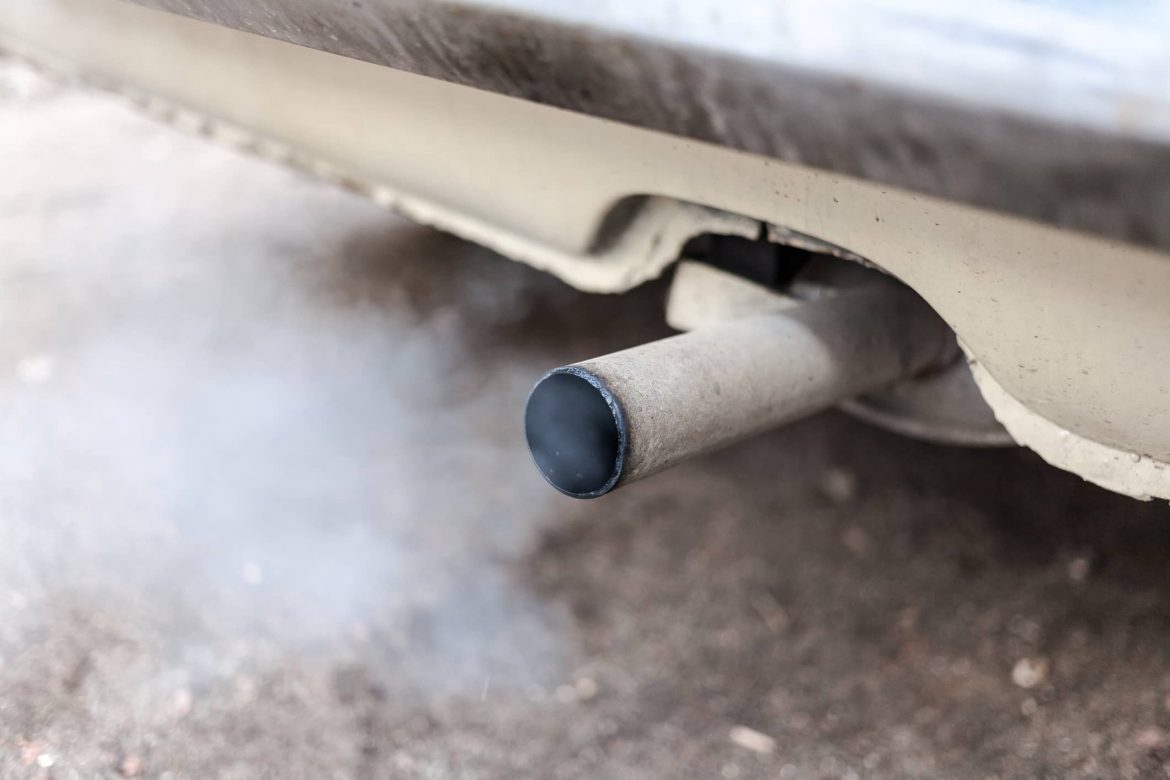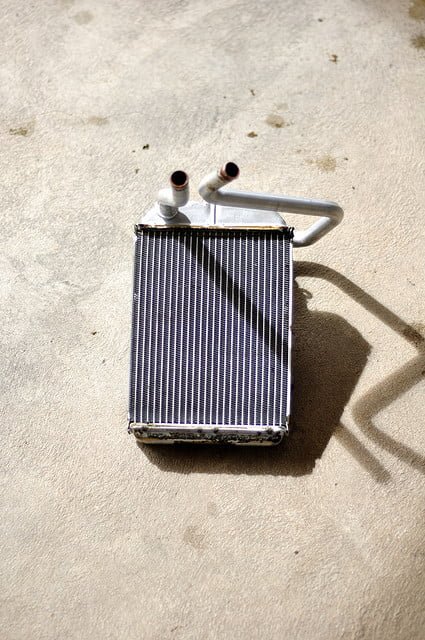 Learning how to check for a blown head gasket isn’t a difficult procedure once you understand what a blown head gasket is and how it can affect the motor in your vehicle. The only way you can be absolutely positive that your vehicle has a blown head gasket is by disassembling the engine and removing the head gasket and checking for gaps or broken spots in the gasket. Since head gaskets are relatively thick gaskets usually made of hard composites or metal, broken spots where the gasket has blown can be easily identified once the gasket is out of the vehicle.
Learning how to check for a blown head gasket isn’t a difficult procedure once you understand what a blown head gasket is and how it can affect the motor in your vehicle. The only way you can be absolutely positive that your vehicle has a blown head gasket is by disassembling the engine and removing the head gasket and checking for gaps or broken spots in the gasket. Since head gaskets are relatively thick gaskets usually made of hard composites or metal, broken spots where the gasket has blown can be easily identified once the gasket is out of the vehicle.
The problem with using this method to check for a blown head gasket is that the majority of the cost of replacing a head gasket is in the disassembly of the engine. Because of this, using the disassembly method to check for a blown head gasket can be very cost prohibitive.
The best way to check for a blown head gasket is to look for multiple indications of a blown head gasket. If you have 1 symptom of a blown head gasket, it’s always possible the problem is being caused by another problem. For example, one of the indications that you’ve got a blown head gasket is to have coolant loss with no signs of external leaks. A blown head gasket will allow coolant to enter the combustion chamber from the engine’s cooling jacket where it will be vaporized during combustion and exit through your exhaust system most of the time without leaving any evidence of a leak. However, since your cooling system operates at a high temperature and pressure, it’s possible to have a cooling system leak that only leaks when the system is pressurized and hot so the coolant again would exit the system as steam leaving no traces of a leak.
To give you more confidence in your diagnosis, it is important to make sure you check for multiple indications of a blown head gasket. To check for a blown head gasket, you need to understand the indications. The head gasket’s job is to keep things where they’re supposed to be in your engine. The head gasket keeps coolant out of the combustion chamber and out of the engine oil. It also keeps exhaust gasses out of your coolant by containing the combustion process. If your head gasket fails, the best place to look for indications of it failing is by checking for things in the wrong places.
One easy check is looking for coolant in your engine oil. When coolant mixes with oil it makes a milky color or light brown sludge. You can check for this by pulling out your oil dipstick and looking for milky streaks in the oil or brown sludge. You can also try checking under your oil cap for the same indications.
Next, you can check for a blown head gasket by looking for coolant in your combustion chamber. If the leak is large enough you can often see steam coming from your tailpipe. This steam will smell sweet and be a thicker whiter cloud than the simple condensation cloud you get right when you start your car. You can also check your spark plugs for evidence of burning coolant which can show up as small white specs around the ground strap and plug tip. Lastly, you can perform a chemical test (available at most auto parts stores) to check for the presence of exhaust gasses in your coolant indicating that there is a leak between your combustion chamber and cooling system.
If you’ve got multiple indications of fluids being where they shouldn’t be in your engine, then it’s very possible that you’ve got a blown head gasket. If you’ve got a new vehicle with a 4 or 6 cylinder engine then you can quickly and easily seal your blown head gasket without the use of any tools! Simply add BlueDevil Pour-N-Go Head Gasket Sealer to your vehicle’s cooling system and your head gasket leak will be sealed as you drive! For more information about BlueDevil Pour-N-Go Head Gasket Sealer, click on the banner below!
You can purchase BlueDevil Pour-N-Go Head Gasket Sealer at any of our partnering local auto parts stores like:
- AutoZone
- Advance Auto Parts
- Bennett Auto Supply
- CarQuest Auto parts
- NAPA Auto Parts
- O’Reilly Auto Parts
- Pep Boys
- Fast Track
- Bumper to Bumper Auto Parts Specialists
- S&E Quick Lube Distributer
- DYK Automotive
- Fisher Auto Parts stores
- Auto Plus Auto Parts stores
- Hovis Auto & Truck Supply stores
- Salvo Auto Parts
- Advantage Auto Stores
- Genuine Auto Parts stores
- Bond Auto Parts stores
- Tidewater Fleet Supply
- Bumper to Bumper Auto Parts
- Any Part Auto Parts
- Consumer Auto Parts
Pictures Provided By:
head_gasket.jpg – By Stocksnapper – Licensed By Getty Images – Original Link
BlueDevil Products can be found on Amazon.com or at AutoZone, Advance Auto Parts, O’Reilly Auto Parts, NAPA, and other major auto parts retailers.
14 responses to "How Can I Check for a Blown Head Gasket?"
14 Comments
Leave a Reply
Related Articles





I like the chemical test overall but is expensive. I found mine by removing all 6 plugs, filling the radiator, and cranking the engine with one plug in at a time in each of the 6 cylinders with ignition disabled. The affected cylinders will force water out of the radiator fill neck, while the good ones will not push any water out. (don’t mistake the cranking vibration on the water in the radiator neck) The affected cylinders will be quite obvious. I did this after finding the milky water in the oil, and compression gasses building to more than 15lbs (cap pressure) in the cooling system forcing water and air into the reservoir.
MY CURE — I put all plugs back in except for #1 (which is where the combustion was forcing water and air out) and put the “Pour and Go” in the next morning with engine cold, idled it for 1 hour, shut it off over night, put #1 plug back in the next morning after it cooled completely, and to date have 10k miles on it with a little over 400k on the 3.4L Impala.
Stephen-
That is excellent to hear! Once the product seals, it would be a permanent seal, so you should be good to go at this point. We appreciate your informative feedback!
Thank you!
-BDP
be sure to disable the fuel injector in the cylinder you removed the spark plug from so raw gas doesnt wash the cylinder down
If no radiator cap can i put it directly into my resovior?
Bonnie-
If your vehicle only has a reservoir/overflow rather than a radiator cap, instead of pouring BlueDevil through the reservoir/overflow, with the car off and engine cold you should disconnect the top radiator hose and add the product there; do not pour it into the reservoir. It may be added into the hose or the opening on the radiator. Once BlueDevil has been added, reconnect the hose and start the idle from that point.
Thank you!
-BDP
To test your radiator for a head gasket. Go to Napa or O’reilly auto parts and ask for “engine block test kit”. Got mine at O’reilly for a deposit of $30.00 which is refundable upon return. The blue fluid was $8.99. Go to you tube and watch video. Extremely easy and will verify within 10 minutes. Worked for me.
Dennis-
We appreciate you providing this insight.
Thank you!
-BDP
Hello there. I have been loosing coolant in my 2004 GMC Sierra 2500HD 6.6 Diesel LLY. It has 190.000 miles. I’ve heard some people say that this stuff not going to work on diesel engines and I’ve heard otherwise. I’ve been working for Orielis a Auto part’s for a little over 6 month and I have been selling the crap out of Blue Devil sealants. Please let me know. Thank you. Gevand.
Gevand-
Thank you for asking about your GMC Sierra 2500HD Diesel. The BlueDevil Head Gasket Sealer (http://store.gobdp.com/head-gasket-sealer-38386/) is safe and compatible to use on both gasoline and diesel engines. As long as the vehicle will maintain idle for a full 50 minutes, and you are not losing more than about a quart of water/coolant during that 50 minutes, you would be a great candidate for the product.
Thank you!
-BDP
I have a 2005 Pontiac Grand Prix. Last week my car was blowing cold air when according to the temp gauge it should have been warm coming out. Now today as i was driving home i noticed the needle was just below the red area on the gauge which I would consider the danger area. I let the car totally cool off and then went to the store and got some premixed antifreeze and filled the reservoir tank to about an inch from the top. On my way home from the store it started climbing back up close to the red area again on the temp gauge. I checked the reservoir and it was at the same level as when I filled it in the parking lot. I checked the garage floor to see if I could see where any antifreeze could have been leaking but did not see any. Does this sound like a blowen head gasket? Thank you for your help.
Jane-
Thank you for asking about your Pontiac Grand Prix. Are you noticing a loss of water/coolant? Based on your description, it does not sound like the symptoms of a blown head gasket. It sounds like there may be an issue with the circulation of water/coolant, causing the vehicle to overheat. You can check the thermostat first to make sure that is functioning properly. If it is, you may want to check when the water pump was last replaced, as a faulty water pump would also create the symptoms you have described. It would also be a good idea to flush the cooling system to get rid of any jellied antifreeze or debris stuck in the system.
Hope this helps!
-BDP
I am pretty sure I have a blown Head gasket. I’ve changed thermostat and water pump and still overheating. I’ve read it’s common for my car. The problem is to use the pour and go or has to idle for 50 minutes. I’m not sure it’ll last that long without overheating. How should I go about this?
Jonathan-
In order to get the benefit of using either of our Head Gasket Sealers, the vehicle would need to be able to idle of a full 50 minutes without overheating or stalling out and you shouldn’t be losing more than about a quart of water/coolant during that 50 minute run. Unfortunately, it the vehicle is overheating too quickly, you would not be a good candidate for the product. A hard part repair may be your best option.
Thank you!
-BDP